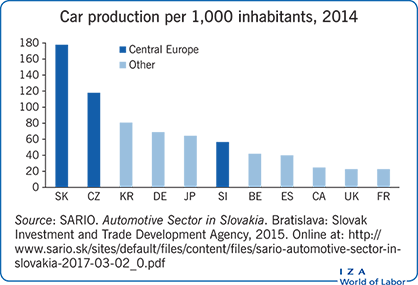Elevator pitch
Central Europe has experienced one of the most impressive growth and convergence stories of recent times. In particular, this has been achieved on the back of foreign-owned, capital-intensive manufacturing production in the automotive sector. With large domestic supplier networks and high skill intensity, the presence of complex industry yields many economic benefits. However, this developmental path is now reaching its limits with the exhaustion of the available skilled workforce, limited investments in upgrading and research, and persistent regional inequalities.

Key findings
Pros
Supplier networks in the automotive industry contribute to job creation and linkages and spillovers stimulate the overall economy.
The automotive industry contributed to Central Europe’s economic convergence with the EU core through sophis-ticated production.
Foreign actors in the sector have helped shape national institutions in terms of education and training and labor market regulation.
Interconnections with the German economy proved beneficial during the Great Recession.
Cons
High levels of external dependence and low diversification of production in some countries raise their vulnerability to external shocks.
While some upgrading has taken place, the share of research and development in employment and value added re-mains comparatively low.
Economic development has been uneven and regional inequalities continue to rise.
The skilled labor supply might soon be fully exhausted.